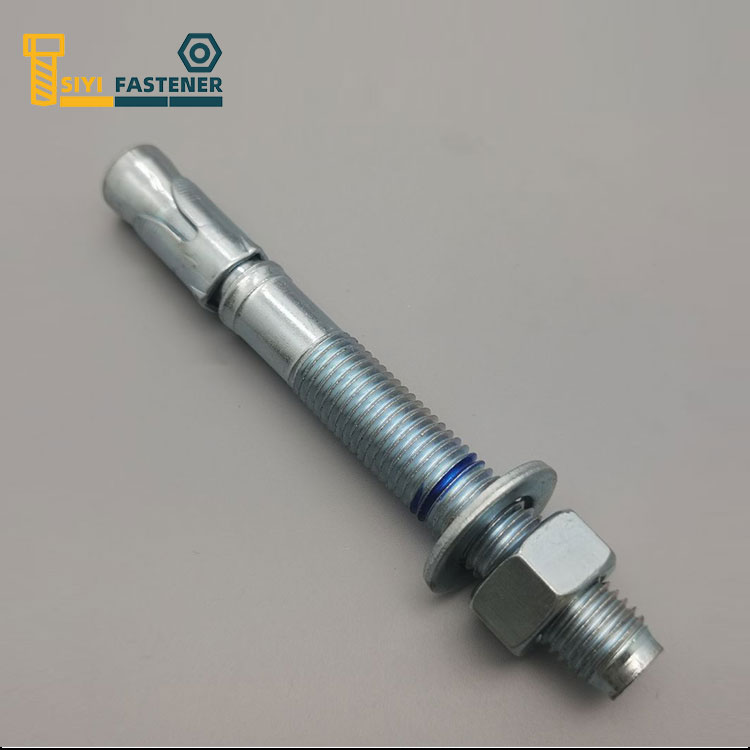What is a wedge anchor used for?
2024-01-09
A wedge anchor is a type of mechanical fastener used to securely attach objects to concrete or masonry surfaces. It is commonly used for applications that require a strong and reliable connection to concrete, such as anchoring structural elements, machinery, equipment, railing, or fixtures to concrete floors, walls, or ceilings.

The wedge anchor consists of several key components:
1. Anchor Body: The main body of the wedge anchor, typically made of steel, is threaded along its length. The top end is often hexagonal or round for wrench tightening, while the bottom end features a cone-shaped wedge.
2. Expansion Clip (Wedge): The wedge-shaped portion of the anchor is designed to expand when the anchor is tightened, creating a secure grip within the concrete or masonry substrate.
3. Threaded End: The top end of the anchor has external threads that allow it to receive a bolt, nut, or threaded rod to secure objects or structures in place.
Wedge anchors are installed by following these general steps:
1. Drilling: A hole is drilled into the concrete or masonry surface using a hammer drill and a drill bit sized to match the diameter of the wedge anchor.
2. Insertion: The wedge anchor is then inserted into the pre-drilled hole with the nut and washer in place on the threaded end.
3. Tightening: Using a wrench, the nut on the threaded end is tightened. As the nut is tightened, it pulls the threaded portion of the anchor upward, causing the bottom wedge to expand against the walls of the hole. This expansion creates a strong anchoring connection by gripping the concrete or masonry tightly.
4. Setting Depth: The anchor should be tightened to the recommended torque or depth specified by the manufacturer to ensure proper expansion and secure attachment.
Wedge anchors provide a robust and reliable anchoring solution in various construction and industrial applications where a strong and permanent connection to concrete or masonry surfaces is required. They offer excellent load-bearing capacity when installed correctly and are suitable for both indoor and outdoor applications. Proper installation is crucial to ensure the effectiveness and strength of the anchor.


